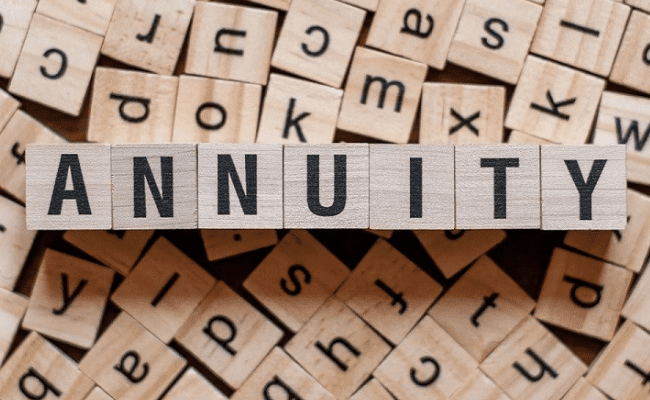Making the most of your 2024/25 tax allowances
Investing your money wisely is more than just pursuing returns – it’s also about leveraging tax allowances to make the most of it. Individual Savings Accounts, known as ISAs, remain popular thanks to their simplicity and flexibility. But are you fully aware of their range of benefits and financial planning applications? From Cash ISAs to Stocks & Shares ISAs, these tax-efficient tools are vital for long-term financial planning.
Cash ISAs function as tax-free accounts similar to those offered by banks or building societies. On the other hand, Stocks & Shares ISAs allow your investments to grow in the stock market or other assets. Importantly, any returns generated within an ISA – whether from interest, dividends or capital gains – are exempt from tax. While many are familiar with the basics, some may not understand the lesser-known ISA rules and flexibilities that could significantly optimise financial planning.

Flexibility to switch between ISAs
You can transfer funds between different ISA types without losing their tax-free benefits. If your financial objectives evolve, you can move money from a Cash ISA to a Stocks & Shares ISA or vice versa. This adaptability is particularly valuable for managing your savings against changing circumstances.
For those relying on traditional savings accounts, it’s worth noting that the personal savings allowance (2024/25) permits basic rate taxpayers to earn up to £1,000 in interest annually tax-efficiently. By contrast, higher rate taxpayers can earn up to £500, whilst additional rate tax payers have no savings allowance. In some cases, this development has diminished Cash ISAs’ attractiveness. Over the long term, prioritising tax-efficient allowances for potential higher-return investments often makes more sense. Stocks & Shares ISAs, supported by historical trends, generally outperform cash over time.
Using ISAs to build long-term wealth
If you’re new to investing, ISAs offer a starting point to establish an investment portfolio, even if on a modest scale. Alternatively, if you’re experienced, they provide a means to continue building wealth tax-efficiently. Yet, pensions also play a key role in retirement planning and should not be overlooked. Contributions to a pension are bolstered by government tax relief and often by employer contributions. However, pensions can only be accessed from age 55 (rising to 57 in 2028) unless certain protections apply.
ISAs, conversely, offer greater accessibility. Withdrawals can be made at any age, allowing them to act as a financial bridge for anyone considering early retirement or supplementary income. Having £50,000 in your ISA accumulated over previous years offers increased financial freedom for those planning for the future. By withdrawing £10,000, you can reinvest it during the same tax year, ensuring the entire £20,000 annual ISA allowance is utilised by 5 April 2025.
Importance of flexible ISA rules
Flexible ISAs could further enhance your financial strategy. They enable you to reinvest withdrawn funds during the same tax year without affecting your annual allowance. Many providers offer flexible versions for both Cash ISAs and Stocks & Shares ISAs, though this feature isn’t universal.
However, there are limitations – it’s only possible to repay withdrawals into the same ISA account from which they were made. Starting 6 April 2024, you can subscribe to multiple ISAs of the same type within a single tax year. However, this change does not apply to Lifetime ISAs and Junior ISAs, where the restriction of subscribing to only one of each type per year still remains.
Reducing tax with capital gains allowances
Investors with significant gains on non-ISA investments can benefit from complementary tax planning strategies like utilising the Capital Gains Tax (CGT) allowance. For the 2024/25 tax year, this allowance is £3,000. If not used before the tax year ends on 5 April, you lose this allowance, making it imperative to plan ahead.
One practical solution is the ‘Bed & ISA’ approach. This involves selling an existing investment and buying it back within an ISA. The sale counts towards your CGT allowance and wraps future investment growth inside the tax-free ISA wrapper. This strategy is especially useful for tidying up smaller or less tax-efficient investments while simplifying future tax reporting.
Passing on ISAs tax-efficiently
If the unthinkable happens, ISA benefits don’t die with the account holder. Since April 2015, surviving spouses or registered civil partners can inherit the tax benefits associated with ISAs. Through provisions called Additional Permitted Subscriptions (APS), they can make one-off contributions equal to the value of the deceased’s ISA holdings and their own annual allowance. If more than one ISA were held, the APS would need to be claimed in relation to each ISA. This transforms ISAs into a more generational vehicle for wealth preservation.
Whether it’s growing wealth, planning for retirement or transitioning financial assets between generations, ISAs remain among the most flexible and tax-efficient tools available to investors. With careful planning and by leveraging less common ISA rules, you can better position yourself for the present and future.
THIS ARTICLE DOES NOT CONSTITUTE TAX, LEGAL OR FINANCIAL ADVICE AND SHOULD NOT BE RELIED UPON AS SUCH. TAX TREATMENT DEPENDS ON THE INDIVIDUAL CIRCUMSTANCES OF EACH CLIENT AND MAY BE SUBJECT TO CHANGE IN THE FUTURE. FOR GUIDANCE, SEEK PROFESSIONAL ADVICE.
THE VALUE OF YOUR INVESTMENTS CAN GO DOWN AS WELL AS UP, AND YOU MAY GET BACK LESS THAN YOU INVESTED.
THE TAX TREATMENT IS DEPENDENT ON INDIVIDUAL CIRCUMSTANCES AND MAY BE SUBJECT TO CHANGE IN FUTURE. THE FINANCIAL CONDUCT AUTHORITY DO NOT REGULATE TAX PLANNING.
Contact Us Form
Please complete this form if you wish to send us your questions or if you would like to request a call back.
We look forward to speaking with you.
Recent GWM articles that may be of interest
How do I prepare for retirement?
A trip of lifetime, more time with loved ones, securing financial freedom - these are [...]
Is now the time to buy an Annuity?
Sales of annuities have reached their highest level since 2014, surging 22% during the first [...]
Financial planning for your family
Raising a family is a marathon effort, as costly as it is rewarding. But financial [...]
Don’t fall victim to pension fraud
The end-goal of scammers is to persuade you to transfer your pension savings to a [...]
Common misconceptions around Investing
Investing is too risky Of course, there are risks involved with investing. That’s why it [...]
Bridging the intergenerational finance gaps
Financial planning transcends generational gaps and can have a huge impact on all members of [...]







